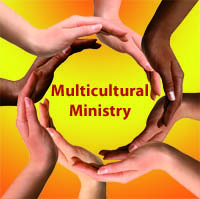![]() A random click on the computer opened a link to a news story published December 19, 2009, just as the ELCA was beginning to reel over the vote to ordain active homosexuals.
A random click on the computer opened a link to a news story published December 19, 2009, just as the ELCA was beginning to reel over the vote to ordain active homosexuals.
The story was printed in the Washington Times and quotes an ELCA bishop and ELCA Presiding Bishop Mark Hanson, along with several others on both sides of the issue.
The story reported alleged acts of intimidation against dissenting clergy who were contemplating withdrawal. Reading this story two years later is illuminating.
The article reads on the subject of intimidation: “I would deny that completely,” said Bishop Gary Wollersheim of the ELCA’s Northern Illinois Synod. “That’s not happening in northern Illinois. I’m sure that’s not happening anywhere in the country. I have done the exact opposite. I have assured clergy, rostered leaders, that hold different opinions on the decisions that [neither] the synod nor I will discriminate against them in any way. The last thing that I would do as pastor of the synod would [be to] bully somebody or threaten them.”
The story moves on to Presiding Bishop Hanson, the foremost leader in the ELCA. He too denied that intimidation was happening. He went on to question that there was any split in the denomination and deflected responsibility by criticizing the media.
Two years have passed and the split has become obvious. Hundreds of churches have voted to leave the ELCA.
That’s not the only thing Bishop Hanson got wrong!
Bishop Hanson continues to defend the status quo, claiming no authority to deal with parish complaints of misconduct.
Redeemer congregation (sponsors of 2×2) turned to him for help with serious intimidation problems. He responded to our first letter in 2008 by telling us of his high regard for the bishop. He failed to respond to subsequent letters sent monthly over the next ten months. Recently, after a long silence and serious conflict escalation, one of our members wrote again and received the predictable response — the defense of church leadership with no apparent regard for the effects their actions have on laity.
Perhaps Bishop Hanson and the ELCA bishops do not understand intimidation.
Intimidation is:
- When a bishop tells a congregation that they must agree to call a recommended pastor or they won’t have a pastor for a very long time. (Redeemer/SEPA 2001)
- When a bishop insists a congregation vote repeatedly on a call question, hoping the congregation will finally vote the “right” way. (Redeemer/SEPA 2001)
- When a synod representative visits prospective members and discourages them from joining one congregation in favor of another. (Redeemer/SEPA 1998)
- When a pastor visits with the bishop’s office and returns to give the congregation 10 days notice by email or never steps foot again in the church. (Redeemer/SEPA 2006 and 2008)
- When a bishop has a lawyer sitting at her right side (literally) at her first meeting with a congregation. (Redeemer/SEPA 2007)
- When a bishop calls a meeting without consulting church leaders and arrives with a party of ten others (not announced as coming), including a lawyer and a locksmith positioned out of sight. (Redeemer/SEPA 2008)
- When a bishop refuses to meet with elected congregational leaders insisting on meeting with the entire congregation. (Redeemer/SEPA, characteristically)
- When a bishop, with no discussion, has a lawyer inform a congregation by fax that they are officially terminated and have no voice or vote at an upcoming Synod Assembly. (Redeemer/SEPA, 2009)
- When a bishop goes into court carrying the First Amendment flag of immunity (Separation of Church and State) but proceeds to use the full force of the courts against lay members. (Redeemer/SEPA 2008-present)
- When a bishop locks faithful members out of the church. (Redeemer/SEPA 2009-present)
- When a bishop commits the resources of 160 churches to attack lay members of one congregation. (Redeemer/SEPA 2008 to present)
and furthermore —
When other congregations and pastors share in confidence that they disagree with synod’s actions but no one dares to speak up — they are the bystanders who allow intimidation to reign.
When a presiding bishop is made aware of such incidents and glibly dismisses them, that’s poor leadership. Most of the items in the above list were shared.
It is just such apathy that creates the bullying tragedies. We in Pennsylvania are watching the esteemed leaders of our largest state-run school fall because good people failed to pay attention to complaints from the lowly. When will our church get the message?
It’s time to clean up the Mutual Admiration Society which seems to define the Council of Bishops under Bishop Hanson’s leadership.
Intimidation happens, Bishop Hanson, and it is happening on your watch.
If the ELCA’s recent resolution to fight bullying is to have any teeth, the ELCA must practice what it preaches.
God’s work; our hands.
A suggestion: The ELCA should create an ombudsman system which was used in predecessor bodies. If our leaders are not going to listen and respond, the faithful need a forum less cumbersome, less biased and more capable of carefully investigating issues raised by congregations, individual clergy and lay members. Failure to find a way to respond to complaints may lead to the same sort of plight the Roman Catholic Church is experiencing. Let’s learn from that.






